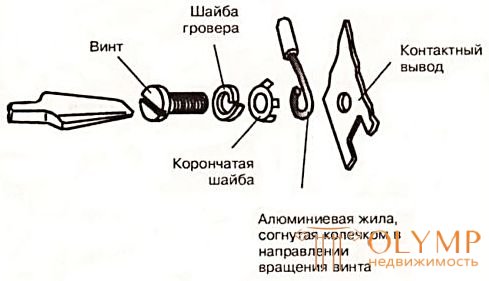
You can create an electrical wiring diagram in the house, calculate and install its necessary elements in any room with minimal knowledge of electrical engineering. But after this procedure for a permanent residence at home, it is necessary to legalize this work, i.e. to hand over documentation and work to an electrician before connecting the house to the power supply, proving that the work is done qualified.
In an apartment with legalization is easier, the wiring there has already been completed and the power supply is connected. However, a change in the approved electrical circuit is a reconstruction and requires coordination.
Initial data.
These are the parameters with which any design begins. The more basic data you collect before starting the design, the fewer errors will be in your project and, accordingly, fewer rework and less cost to implement the project.
Conventionally, the source data can be divided into two groups:
external (characterizing that part of the general power supply network, which is outside, outside the doors of your apartment) and internal (characterizing the “intra-residential network” and electricity consumers).
External data includes:
- Phase of the power supply to the house (single or three phase).
- the maximum electrical power allocated to you.
- system of grounding external power supply network.
In addition, the voltage of the network can be formally specified, but now it can only be 220 volts (380 volts is the interfacial voltage of a 220-volt three-phase network).
Internal data.
It's more complicated. Ideally, the apartment is best to plan all the rooms for the location of furniture, lighting, planned for use in the room electrical consumers. It is necessary to find out the electrical power of each electrical device (it is written in the passport) and draw a label with these parameters. Based on these data, you can specify all sockets, switches, wiring outlets for chandeliers and lamps on the floor plan.
Now let's digress from the design process and talk
about the concepts and elements of our internal electrical network.
There are not many of them, but knowing why they are needed and how they work will allow you to use them correctly.
What you need to know about the connection of wires?
Be careful when connecting aluminum wires. Almine under pressure "flows", as a result of which the contact deteriorates. Therefore, special requirements are imposed on the clamps for aluminum wires: constant pressure and prevention of extrusion of the wire from the clamp. 
The ring washer does not allow the ring to be heard to the sides. Grover springs, keeping the screw pressure constant.
Never connect aluminum and copper wires together! This may cause a fire.
Upon contact of Aluminum-Copper, a “galvanic couple” is formed, and under this, the aluminum is destroyed under the influence of electrocorrosion. Contact is broken, leakage currents and sparking appear.
If the need arose, use to connect aluminum and copper wires to gas stations, RCDs, electricity meters or other steel transition elements.
To carry out the installation of electrical wiring is more expedient not from the head but from the tail, i.e. not from the switchboard, but from the end devices. The only point in this matter: it is better to immediately connect at least temporarily pre-assembled protective and control zone, without collecting and connecting the protective and distribution. By this, you will be able to immediately use electricity, albeit to a limited extent, but this is already a lot of tools and workplace lighting.
Stage 1.
We start with the placement of electrical installation boxes into which sockets and switches will be installed and wiring from sub-distributors to junction boxes.
Stage 2.
The next step is to connect the wires in the junction boxes and lay the cables to the switchboard of the apartment. (PHOTO + VIDEO)
Stage 3.
Next, we collect the main switchboard, we make its suspension and connection.
Stage 4.
After we finished the installation of the switchboard, we leave all the gas stations in the off position and go into the premises to install switches, sockets, lighting fixtures and connect electrical consumers connected directly to the house wiring.
We start with the outlets.
Connect the sockets to the wires (yellow-green wire to the ground electrode) and install the sockets in the boxes.
We connect the one-button switches and fasten them in the mounting boxes. In the premises where we installed one-button switches, we install standard lighting fixtures or hang up the Ilyich light bulb (connect the lamp holder to the blue and brown wires).
Double-key switch is connected to the three-core cable as follows:
- brown wire - to common terminal;
- blue and yellow green - to the two remaining ones (the common terminal is searched for a dial)
Luminaries working from the double-button switch, we connect by colors:
- blue - zero.
- brown and yellow green - phases 1 and 2.
Electrical consumers who are connected directly to the wiring, connect in accordance with the instructions to these consumers.
Wire colors:
- brown - phase.
- blue - zero.
- yellow-green - grounding.
If the wiring remains unconnected to consumers, it must be insulated.
Что бы оставить комментарий войдите
Комментарии (0)